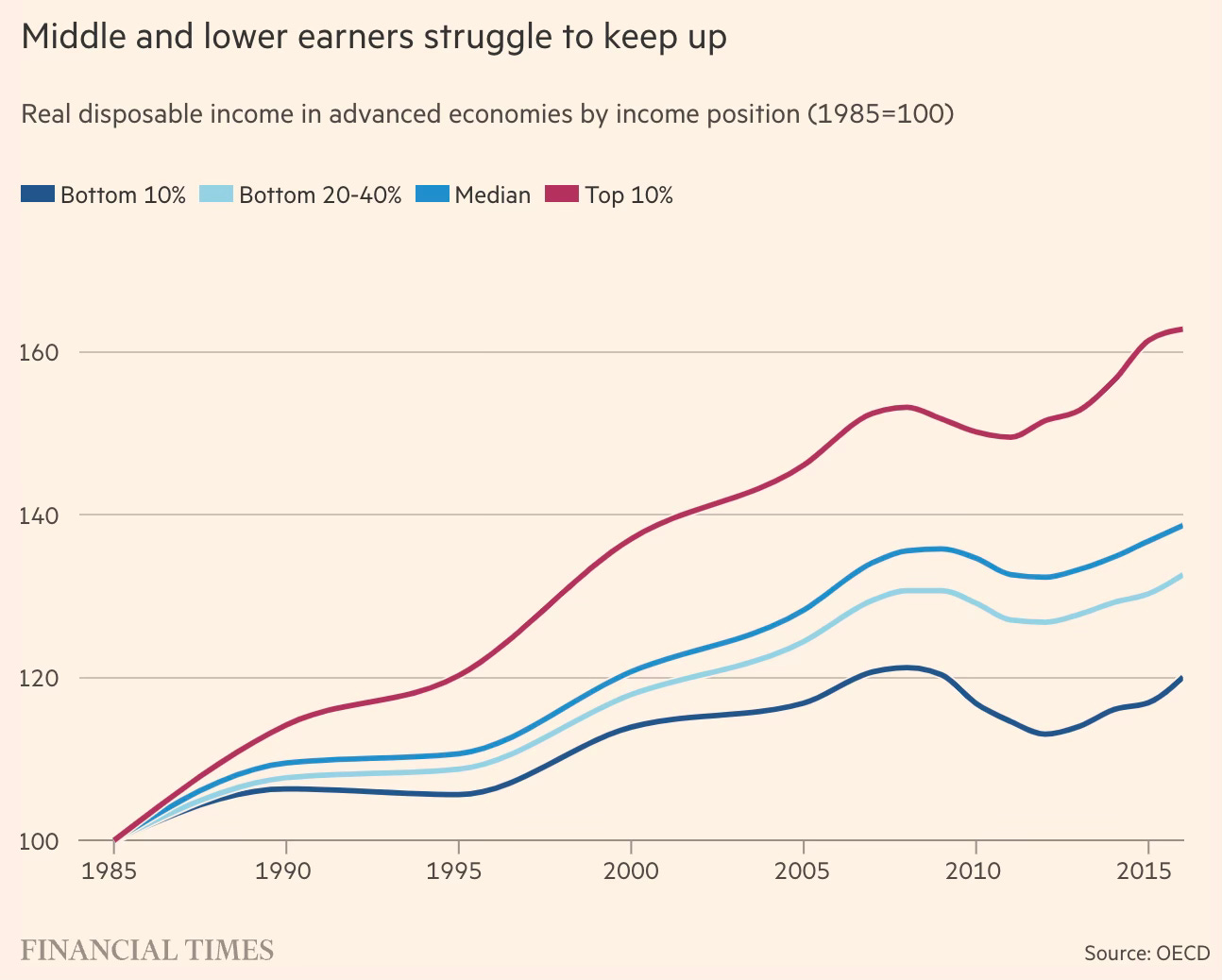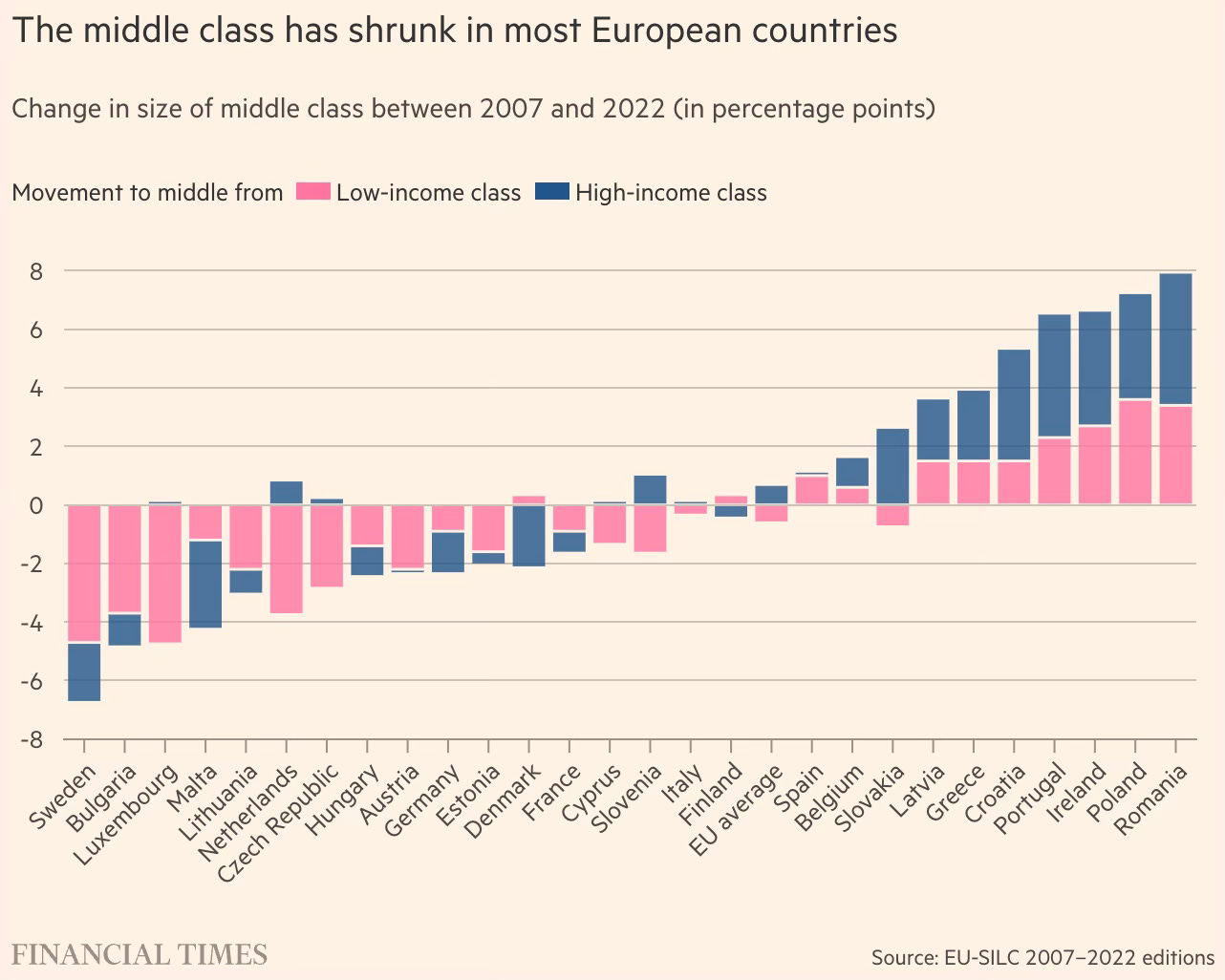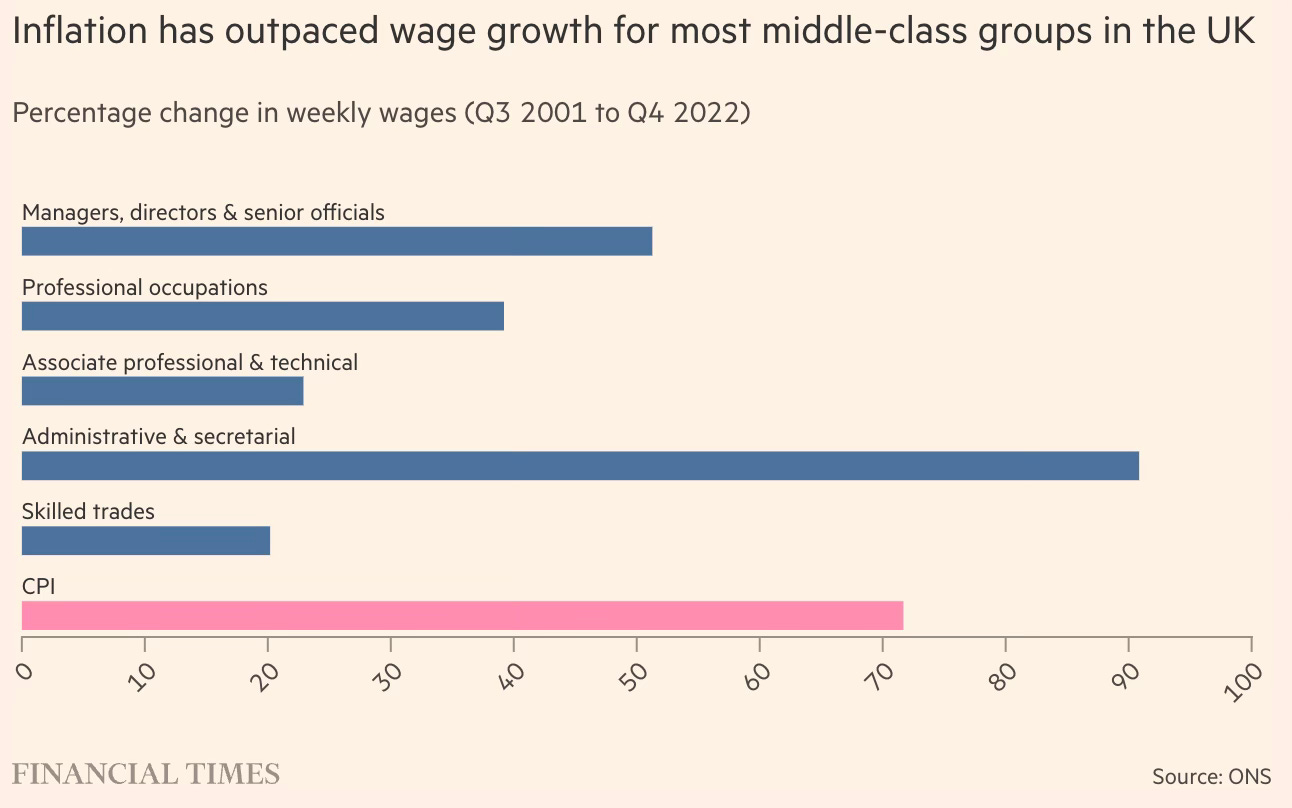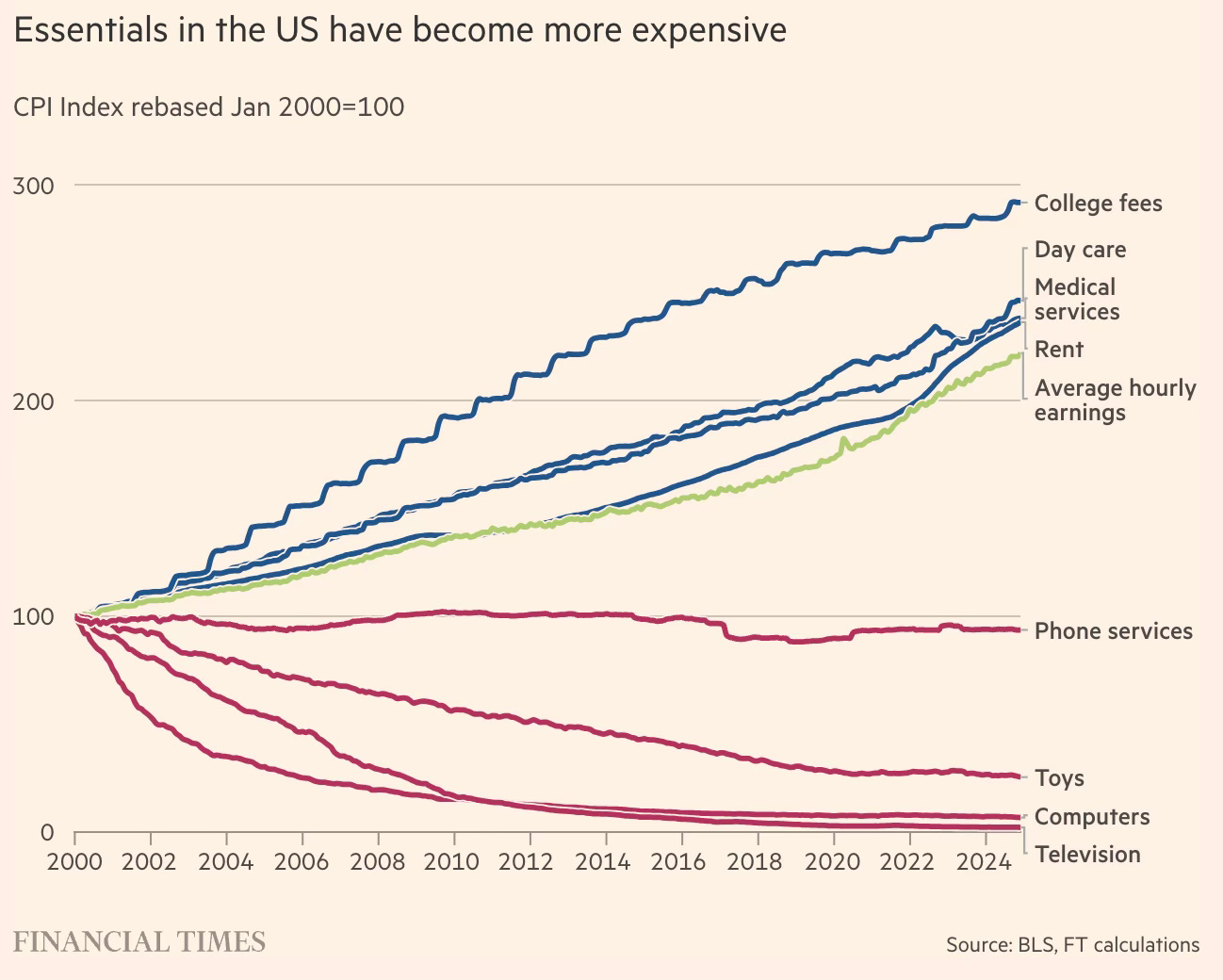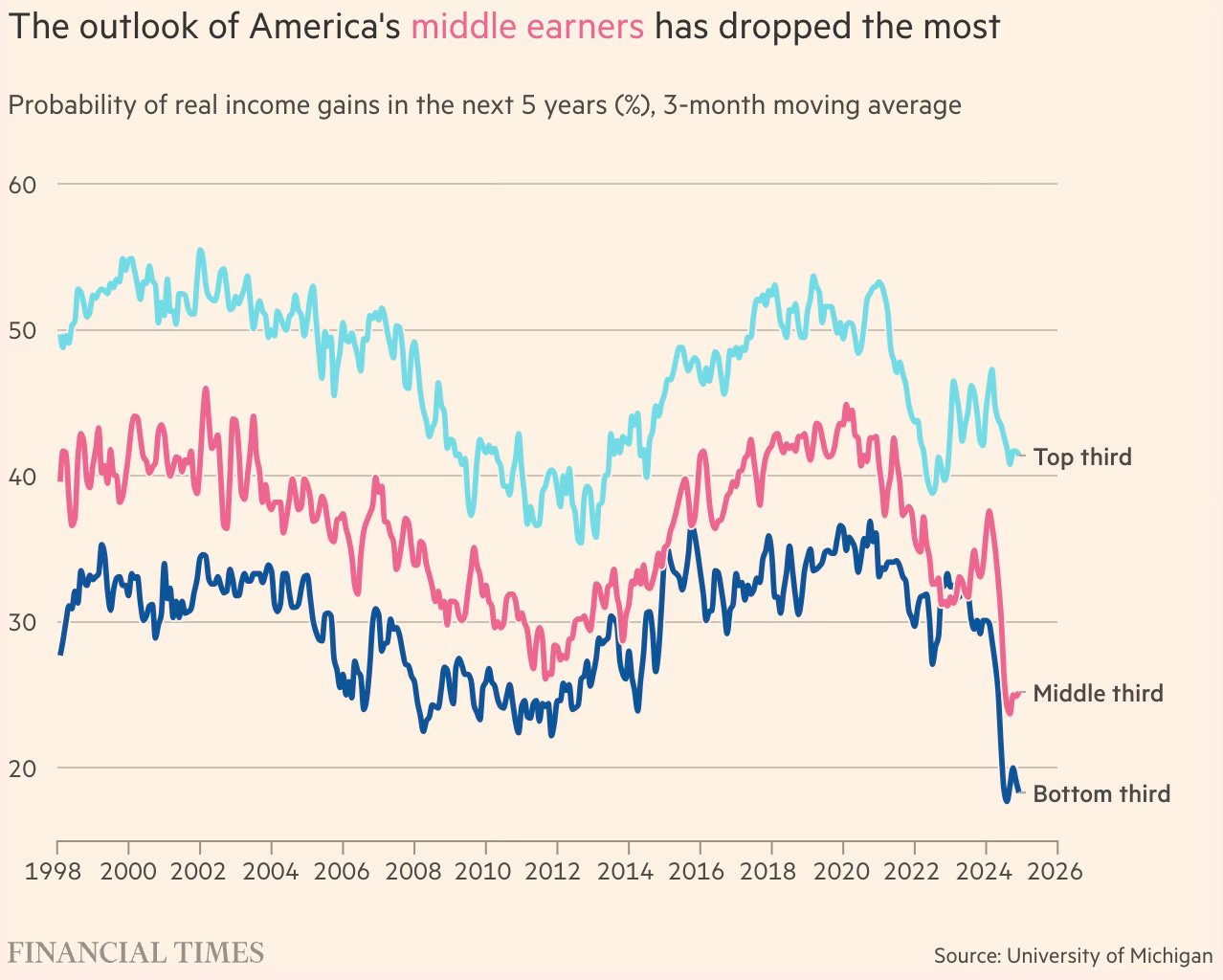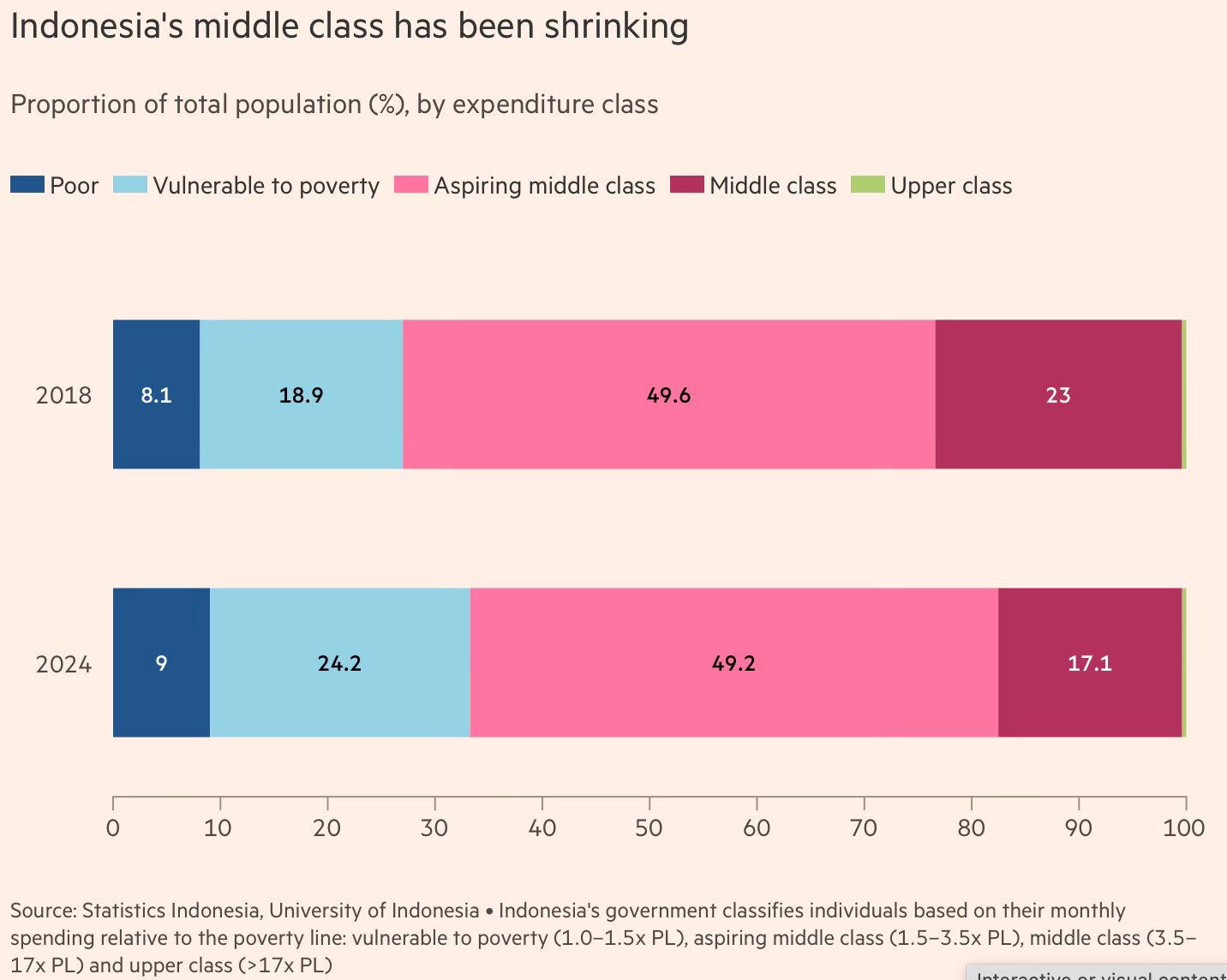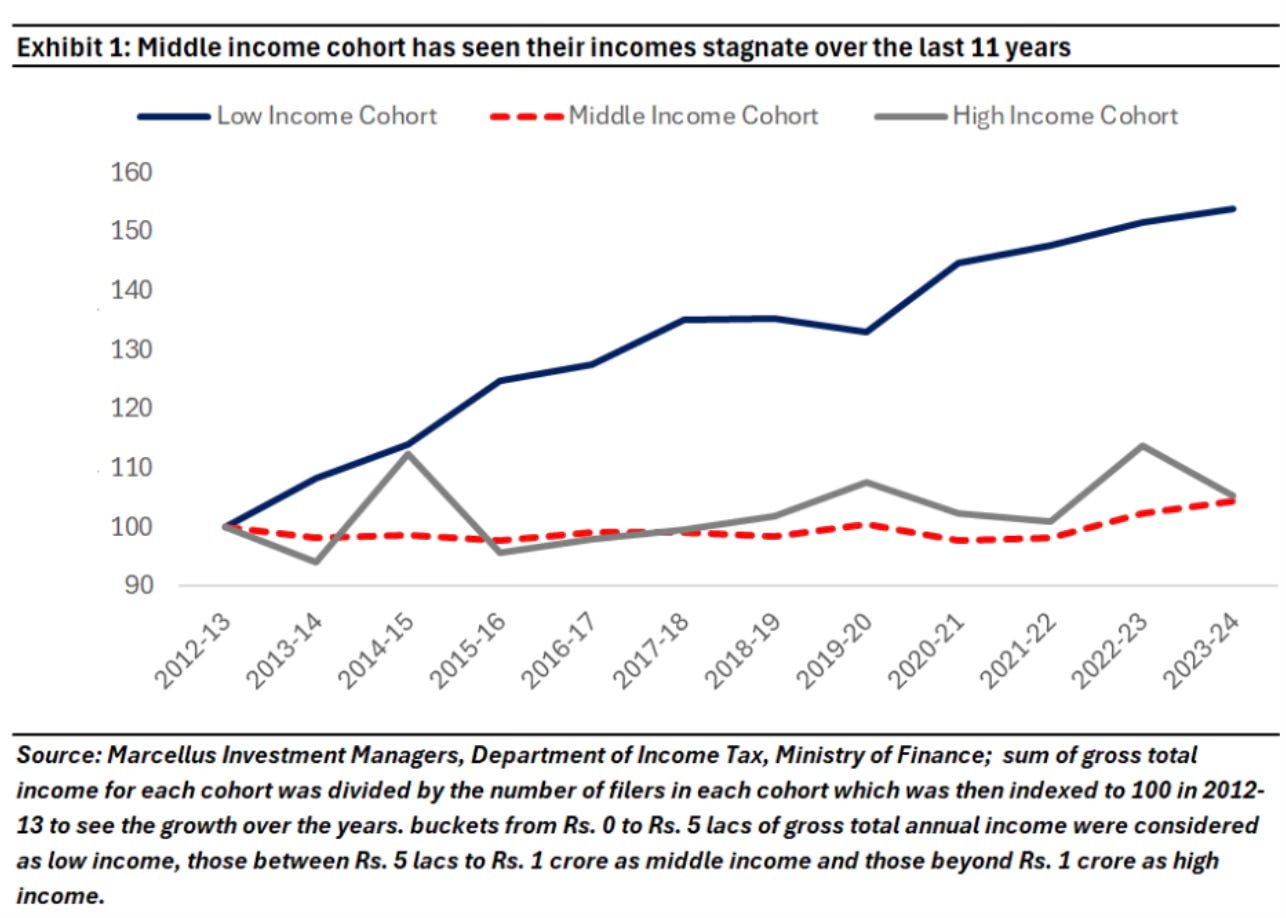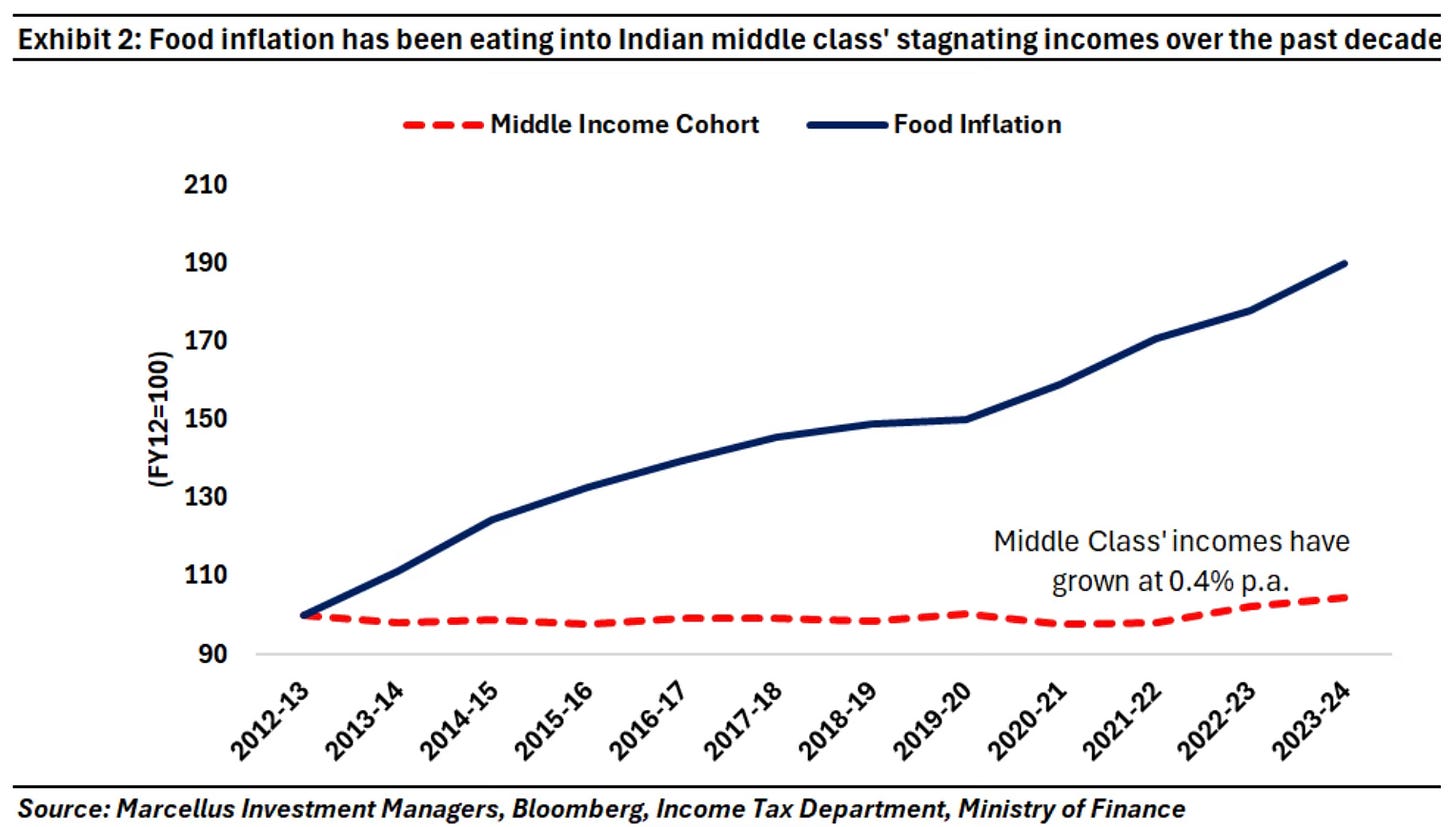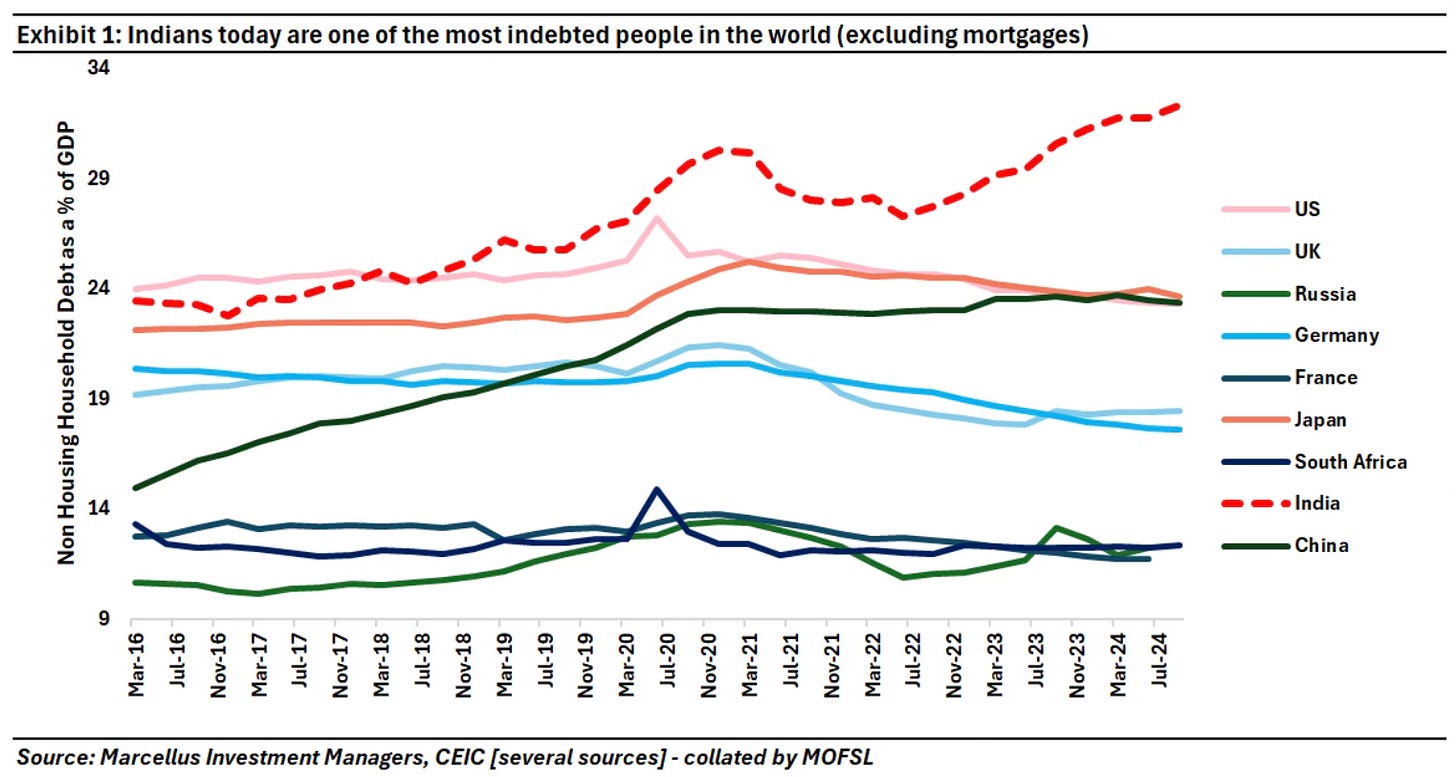By their own reckoning multilateral and bilateral lenders mobilised $88bn of private finance for low- and middle-income countries in 2023, only a belated jump after years of stagnation (see chart). Just $20bn went to sub-Saharan Africa, of which $10bn reached the poorest countries. By comparison, the region received $62bn of aid that year... In 2018 a task-force launched at Davos, the annual gathering of the World Economic Forum, envisaged that every public dollar could whip up two or more from the private sector. Such ratios are rarely achieved. A forthcoming study by odi Global, a think-tank in London, examines a subset of investments called “blended concessional finance”, where some of the capital comes at below-market rates. It finds that by 2021 each dollar was attracting about 59 cents of private co-financing in sub-Saharan Africa, and 70 cents elsewhere.
3. President Trump's Executive Order on pharmaceutical prices should draw attention to the practices followed by Big Pharma. This is a good illustration.
Take the example of Keytruda, a cancer treatment from Merck, which is manufactured in Ireland. According to Jefferies, an investment bank, Merck holds the intellectual property (IP) for Keytruda in the Netherlands. The arrangement allows the firm to book profits at a tax rate of 10.5%, roughly half what it would pay if the ip resided in America.
4. Mexico is taking democracy to the judiciary.
On June 1st Mexicans will vote to elect judges to 850 federal posts, nine Supreme Court seats, 22 powerful tribunal jobs and thousands of roles in lower courts. In 2027 a second vote will see the rest of Mexico’s judiciary filled. A few countries elect a handful of judges, mostly to lower courts. Mexico will become the first country in the world where every judge on every court is chosen by popular vote. Mexico’s Congress passed the constitutional changes required for this upheaval in September last year. It was Andrés Manuel López Obrador’s final act as president, achieving one of his most cherished goals. His successor, Claudia Sheinbaum, has followed in his footsteps. Their party, Morena, argues that the election of judges will make the judiciary more democratic, purge corruption and nepotism, and widen access to justice.
There are several cocnerns.
The only place where judges are currently elected to higher courts is Bolivia. Its Supreme Court judges have been elected since 2011. The selection mechanism has been a disaster, with the court’s authority undermined by an endless political squabble to control it. Two-fifths of Bolivians who voted in the most recent judicial election spoiled their ballots. In Mexico, judicial elections pose a graver danger than mere chaos: control of the justice system by drug gangs. Criminal gangs are happy to kill or threaten public officials to get what they want. The gangs already field their own candidates in local elections. More quotidian corruption of judges by businessmen and officials, also endemic, will probably expand. It is hard not to see the elections as a final step that entrenches Morena as Mexico’s political hegemon...
Institutional knowledge will be lost. Only a minority of sitting federal judges are standing for election. Just three of the current 11 Supreme Court judges are running. A study by Mr Ríos found that it took an average of 24 years to become a magistrate. From June, cases on constitutional law and million-dollar commercial disputes will be heard by people who may have never set foot in a courtroom.
5. The emergence of the UAE, a country with less than a million citizens, as a major investor in Africa.
Persian Gulf investments in Africa, primarily by the Emirates, have exploded in recent years. Since 2019, $110 billion worth of deals — mostly by firms tightly aligned with the ruling powers — have been announced, dwarfing amounts pledged by any other country... Like other oil-producing nations in the Persian Gulf, the Emirates is looking to diversify its economy away from fossil fuels, and it sees Africa as an essential part of the plan... Powerhouse Emirati corporations based in Dubai and Abu Dhabi with political connections are in dozens of countries across Africa...AMEA Power is already building or operating clean energy plants in Burkina Faso, Djibouti, Egypt, Ethiopia, Ivory Coast, Kenya, Morocco, South Africa, Togo, Tunisia and Uganda and has plans to expand. Abu Dhabi National Energy Company has projects in Morocco, Senegal and South Africa and is participating in a project to invest $10 billion in renewable energy in sub-Saharan Africa. DP World, the gargantuan government-backed ports and logistics operator, has invested billions of dollars in ports and economic free zones from Algeria to Zambia, including in the Berbera port city in the breakaway republic of Somaliland, where the Emirates also has a military base. Last summer it announced that it would spend another $3 billion on African ports over the next three to five years. Last year, the Emirati International Holding Company invested more than $1 billion for a 51 percent share in the Mopani Copper Mines in Zambia. Spending in Egypt has also soared. Last year, the Emirates agreed to invest $35 billion to develop a new city and tourism destination on Egypt’s Mediterranean coast.Emirati investment in Africa has ramped up as China’s has tapered off. Once the biggest foreign investor on the continent through its Belt and Road Initiative, China still has a large presence, but Beijing has pulled back in recent years after a series of debt crises in Africa and economic problems at home. In 2022 and 2023, the Emirates announced a total of $97 billion in investments in Africa — three times China’s total, according to fDi Markets, a database of foreign investments. U.S. investment in 2023 was about $10 billion... The U.A.E.’s total foreign assistance in Africa exceeded $1 billion in 2023-24... Meanwhile, Mr. Trump has fast-tracked America’s exit from Africa, ending billions of dollars in funding, dismantling the U.S. Agency for International Development and ending all contributions to the African Development Bank. The State Department’s reorganization plan also calls for the elimination of most operations in the region.
6. Germany's unique labour market problem - highest labour force participation rate and low unemployment rate, coupled with the lowest number of hours worked.
Soybean started spreading in India with the introduction of the Barag variety in the early 1970s. It was brought from Mississippi, United States (US), by scientists of Illinois University. The area under soybean reached a reasonable base of 100,000 hectares in the mid-1970s and kept increasing in leaps and bounds. The area crossed 13 million hectares in 2022-23, and it is still rising. With 99 per cent of the area being rainfed, it did not put any stress on water resources. Soybean output increased from 130,000 tonnes during the mid-1970s to 13.6 million tonnes during 2021-22 to 2023-24, ie more than 100 times increase in less than five decades. Production doubled every four years between 1975-76 and 1999-2000. No crop in India has increased so much in less than 50 years after reaching a comparable base. Such examples are rare even abroad and almost absent in a rainfed situation.
On the flip side, the yield of soybean in the country has remained flat and fluctuated around one tonne per hectare for 45 years. It rose above 1 tonne in some favourable years but again returned to 1 tonne. There is another distinguishing feature of soybean that its output witnessed a 100-fold increase in 48 years without any appreciation in productivity, except an initial edge in yield through the introduction of an exotic germplasm... What role did domestic research & development (R&D) play after the initial introduction and adaptation of exotic soybean seeds in the 1970s, which brought a big one-time jump in yield? Domestic agricultural R&D has at best ensured sustaining productivity by checking any decline in yield over time. However, it is baffling that the National Agricultural Research System could not bring any improvement in yield in 50 years despite reasonable expenditure. But the rest of the world has moved on. In the mid-1970s the yield in the US was two times and the world average was 60 per cent higher than that of India. The recent yield of soybean in the US and Brazil is 3.3 times and the world yield is 2.6 times the soybean yield in India.The main reasons for stagnant productivity are: One, an absence of collaboration and germplasm transfer from US universities after the initial introduction; two, India’s policy of a ban on genetically modified (GM) food crops (GM varieties now occupy 75 per cent of the area under soybean in the world); and three, the inability of national agricultural research systems to achieve any breakthrough in soybean productivity. If the soybean yield in India had kept pace with that in the US or Brazil, our production would have doubled and India’s import dependence would have been 40 per cent lower than what it is now.
8. Steven Pinker's thoughtful essay on Harvard.
According to its critics, Harvard is a “national disgrace,” a “woke madrasa,” a “Maoist indoctrination camp,” a “ship of fools,” a “bastion of rampant anti-Jewish hatred and harassment,” a “cesspool of extremist riots” and an “Islamist outpost” in which the “dominant view on campus” is “destroy the Jews, and you’ve destroyed the root of Western civilization”...Most of my colleagues, too, follow the data and report what their findings indicate or show, however politically incorrect. A few examples: Race has some biological reality. Marriage reduces crime. So does hot-spot policing. Racism has been in decline. Phonics is essential to reading instruction. Trigger warnings can do more harm than good. Africans were active in the slave trade. Educational attainment is partly in the genes. Cracking down on drugs has benefits, and legalizing them has harms. Markets can make people fairer and more generous. For all the headlines, day-to-day life at Harvard consists of publishing ideas without fear or favor...A poll of my colleagues on the academic freedom council turned up many examples in which they felt political narrowness had skewed research in their specialties. In climate policy, it led to a focus on demonizing fossil fuel companies rather than acknowledging the universal desire for abundant energy; in pediatrics, taking all adolescents’ reported gender dysphoria at face value; in public health, advocating maximalist government interventions rather than cost-benefit analyses; in history, emphasizing the harms of colonialism but not of communism or Islamism; in social science, attributing all group disparities to racism but never to culture; and in women’s studies, permitting the study of sexism and stereotypes but not sexual selection, sexology or hormones (not coincidentally, Hooven’s specialty)...Harvard, too, is not a monastic order but part of a global network. Most of our graduate students and faculty members were trained elsewhere, and go to the same conferences and read the same publications as everyone else in academia. Despite Harvard’s conceit of specialness, just about everything that happens here may be found at other research-intensive universities. Finally, our students are not blank slates which we can inscribe at will. Young people are shaped by peers more than most people realize. Students are shaped by the peer cultures in their high schools, at Harvard and (especially with social media) in the world. In many cases, students’ politics are no more attributable to indoctrination by professors than are their green hair and pierced septums...Harvard, as I am among the first to point out, has serious ailments... But Harvard is an intricate system that developed over centuries and constantly has to grapple with competing and unexpected challenges. The appropriate treatment (as with other imperfect institutions) is to diagnose which parts need which remedies, not to cut its carotid and watch it bleed out.
9. Graphic on how Chinese solar panel makers drove down prices.
In 2023, Chinese-headquartered companies produced 84 per cent of the world’s solar modules and 92 per cent of solar cells, according to BloombergNEF… Chinese-made panels are still dirt cheap at about $0.09 per watt, on BloombergNEF data, down from $1/watt at the start of 2012.
10. FT has an article on China's dominance of rare-earth minerals and the export controls it placed in early April on the export of seven rare earth elements and permanent magnets made from them (which are also used in fighter jets like US F-35s).
The controls, which require exporters to gain licences from commerce ministry officials for shipments of the seven targeted rare earths and of permanent magnets that are made from them, highlighted the geopolitical leverage conferred by China’s dominance over global mineral supply.
More on the latest restrictions
Rather than raw materials in bulk they involve finished articles, particularly magnets, made by only a few Chinese companies and traceable through the supply chain. Unlike previous export controls, they are executed via end-user licensing requirements for materials with dual military and civilian use, which restricts foreign companies selling them on. If China really does maintain and enforce a ban on sales to the US, it could affect the manufacture of F-35 fighter jets as well as electric vehicles. The materials involved are so-called medium and heavy rare earths, which are harder to extract and process. Industry experts say that increasing supply from elsewhere is likely to take years, as is retooling EV or other supply chains to use other technologies. Prices of heavy rare earths such as dysprosium shot higher after the controls were announced.
And the shocking reality that even as Trump wages war, America appears to have done very little to prepare for it by, for example, stockpiling rare earth reserves.
Sweden saw billionaire wealth rise by 4 points to 31 per cent of GDP — the biggest increase, and to the highest level, of the 20 major economies in my analysis. Sweden has 45 billionaires, about 1.5 times more per capita than the US, which is often said to be enjoying a new gilded age. The richest American ever was John D Rockefeller in around 1910, when his fortune surpassed 1.5 per cent of GDP... A functioning economy will generate a balanced billionaire class, with more “good” wealth from industries like tech or manufacturing than “bad” wealth from sectors such as real estate or commodities. Not that real estate or commodities are inherently bad. But they contribute less to productivity and are less likely to be held in high popular esteem than, say, cars or software. In Sweden, the “good” billionaires are outnumbered two to one by the “bad” ones... At just 12 per cent, the “good” share of billionaire wealth is third lowest among my top 10 developed countries... Nearly 70 per cent of Sweden’s billionaire wealth comes from inheritance, third highest on my list after France and Germany... The country taxes capital much less heavily than salaries, and sometimes taxes capital regressively... Sweden has also held interest rates well below the European average, and low rates tend to inflate asset prices, while making it easy for the rich to borrow money to make more of it.





















